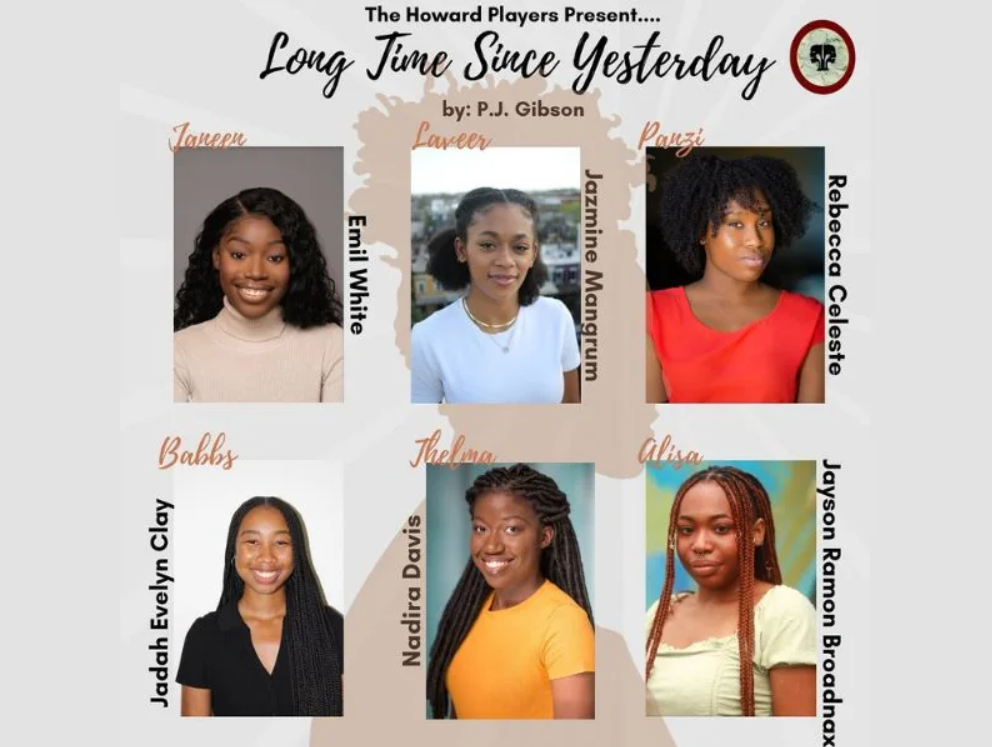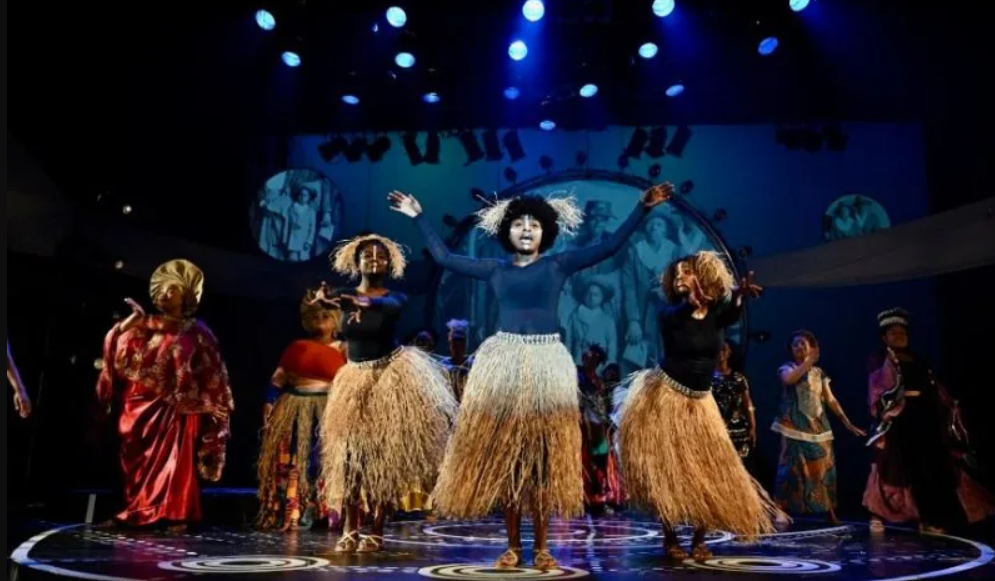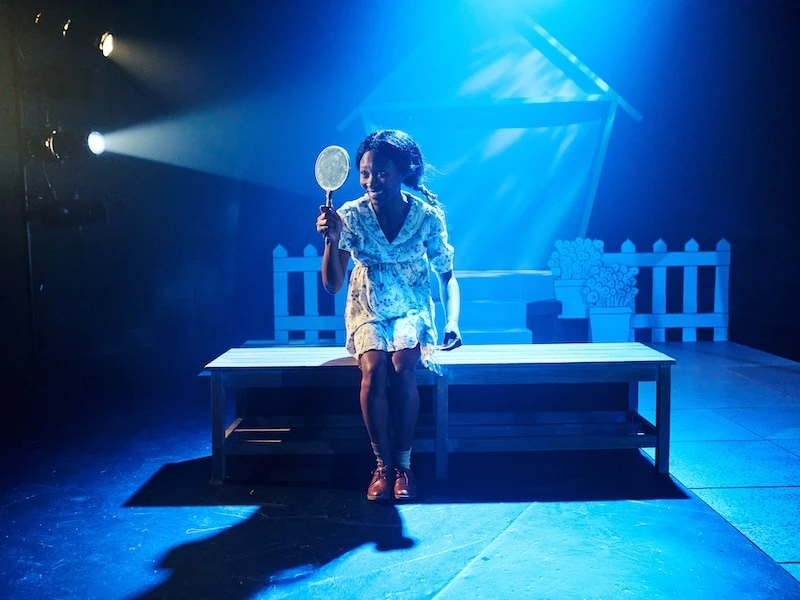by Whit Davis
This article was originally published in DC Theater Arts, here.
What happens when life doesn’t turn out as planned? What happens when the promise of always being friends is fractured? Why does it take grief to make us realize what we have? Long Time Since Yesterday by P.J. Gibson, directed by theater student Naynna Hollins, explores these questions through the friendship between six Black women brought back together by a tragic death. The Howard Players revitalize a lesser-known but essential play for their Next Up! Play Festival featuring student-led productions that spotlight the developing artists of the Department of Theatre at Howard University in the Al Freeman Jr. Environmental Theatre Space.
The death of Jeneen (Emil White) reunites college classmates Laveer (senior Jazmine Manfrum), Babbs (Jadah Evelyn Clay), Thelma (Nadira Davis), Panzi (Rebecca Celeste), and Alisa (senior Jayson Roman Broadnax). We find the group gathered together in the home Jeneen shared with her husband. As they reminisce and reflect on who she was or who they thought she was, her suicide unearths deeply held hurts as Babbs admits that she has felt at her lowest despite possessing beauty that people associate with happiness and desirability. She drinks and pacifies herself with jokes and humor, which acts as the thread line through a heartwrenching story. Like Jeneen, Babbs is lonely. Thelma feels ugly despite her achievements. Alisa believes her braggadocious verbosity about her husband and her success cover up her lost sense of self. Panzi is too busy projecting her anger at Laveer to hold space for her feelings about being misunderstood. And Laveer boasts of being a free-spirited artist who is without rooted connections.
Through flashbacks, we learn that the friendship was the strongest between Laveer and Jeneen, but after graduation, a conflict between Laveer and Panzi caused a rift between Jeneen and Laveer. A friendship they both promised would last forever is torn apart. Years later the death of Jeneen’s father brings them back together, back to their promise. The interwoven flashbacks reveal secrets between Jeneen and Panzi, and Jeneen and her husband. The transitions between the flashbacks and the present have perfect timing and are clearly defined so that the story never loses its rhythm, and the audience easily follows the timeline. When the lights dim on the cast, we know we enter a flashback as the spotlight hovers above Jeneen to give her a ghost-like presence.
Who was Jeneen? This question becomes a focal point as each friend except Panzi believes her to be innocent, shy, and childlike. They made little room for her to be big, imperfect, sad, and a 30-something-year-old woman with needs. In an intimate conversation with Laveer, Jeneen reveals the haunting of judgmental voices in her head. She may have lived a life she never truly wanted, while her friends are left to grapple with this truth.
The tension as thick as fog on a crisp fall morning fills the home between Laveer and Panzi until it drowns everyone, and the only way to make it to the surface is to swallow the bitterness of truth. This climatic moment reveals secrets that were ultimately too heavy for Jeneen to live with. These secrets are too heavy for even the living to deal with.
The cast does a fantastic job wrestling with themes of grief, love, and identity in an intimately set black box theater with minimal set design and carefully placed props like a couch and a bookshelf. White’s performance seems to pull from a personal place deep within as she honors Jeneen’s pain. She captures the rollercoaster of emotions felt by Jeneen, moving from joy to despair. Her tears and facial expressions can easily be another character in the story. Celeste’s presence is powerful. With each line she recites, they land eloquently and with ease. She becomes Panzi. Clay has remarkable comedic timing as Babbs. A play this heavy needs humor, and she delivers. The entire cast surrenders to the story.
The Howard Players productions are invaluable because they provide an opportunity for students to explore their talents and gifts. They share them with a community that believes in pursuing art as serious, rigorous, and meaningful work. To be nurtured in a space that values Black stories, Black storytellers, and Black spaces prepares these artists for a career where they may be the only ones. But they will not shrink; they will bloom.







